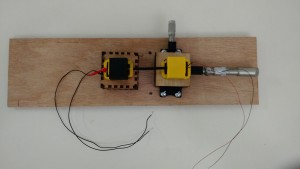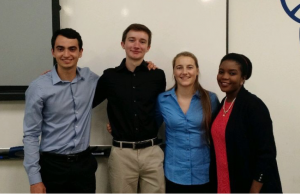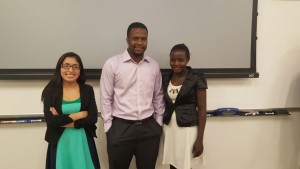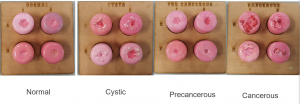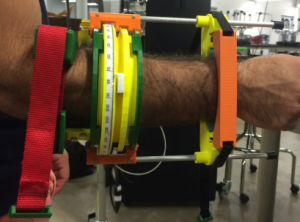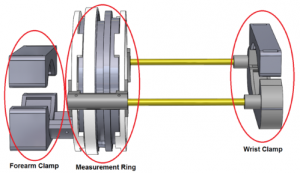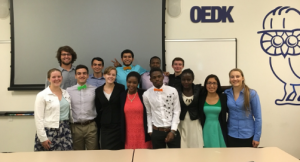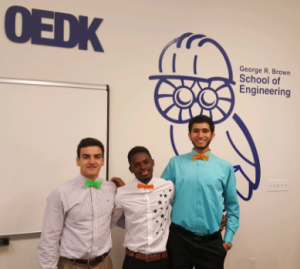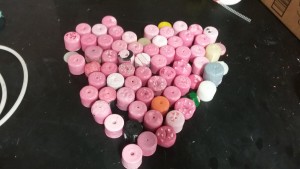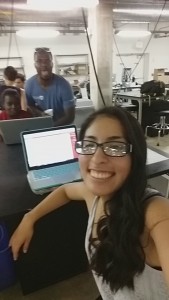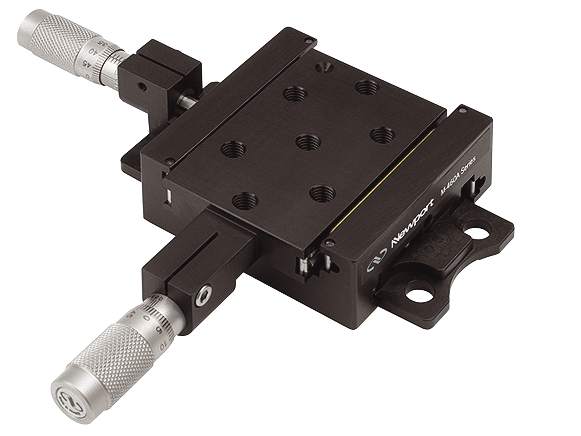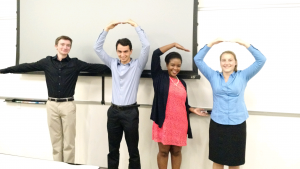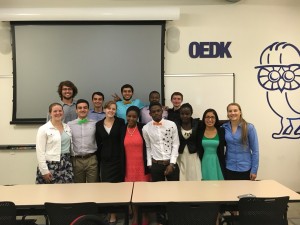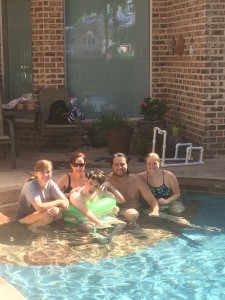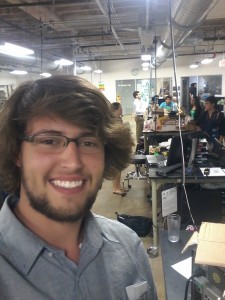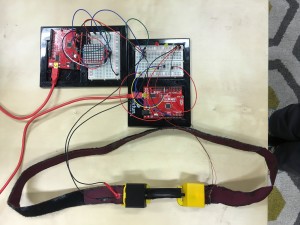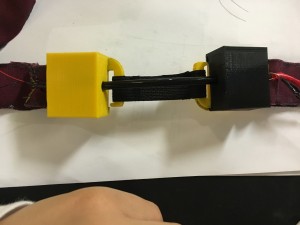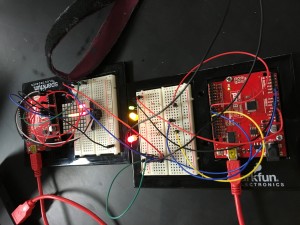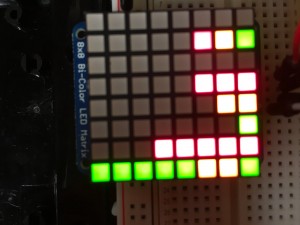For me, this week consisted of two main activities: preparing and giving our final presentation and testing the minimum separation between our fiber optic cables that we could detect from the light levels. We had created the slides for our presentation last Friday, so Monday they just required editing. On Monday we also all went to the pool to help test Team Swim Support’s device and it was really cool to see how far they had come. I had already tested with them once, but they had modified some straps since I last tested which made it much harder for me to wriggle down into the water.
As I was returning from the pool Monday, our client dropped off a translational micrometer for us to use in testing the minimum distance between the fiber optic pieces that we could detect. Because we would be working with such small distance, we knew it would be under two millimeters, we had to make sure every part was well secured so no accidental error affected our results. In order to attach our box to the micrometer, laser cut pegs that fit into the shape of the hooks on our boxes which we glued to a wooden platform. On the underside of that platform, we attached four pieces of dowel rod which fit into holes on the micrometer to hold it down. To hold the other box, which needed to be at the same height as the first but without having a micrometer below it, we laser cut a box which we attached pegs for the hooks to as with the first. We then glued this box onto a piece of plywood and screwed the micrometer onto the same piece of plywood. The entire setup is below.
Once everything was dry, we were able to place our boxes with the fiber optic onto the setup and move the micrometer such that the fiber optic pieces started out touching. We then slowly moved them apart until we could read a difference in the light level, which occurred at .25mm. While creating the setup took much longer than the test itself, knowing the sensitivity of the device we made is a good piece of information to pass on to our client so that she might be able to take that into account when continuing to work on an optical tocodynamometer.
Wednesday morning we practiced our presentation and prepared the materials that we would be handing off to our client. Immediately after lunch all of the groups presented. It was great having a few extra audience members, including Dr. Oden, Dr. Leautaud, Dr. Saterbak, and my group’s client Dr. Carns. Wednesday was actually my last day as I was scooting off to get to a family wedding, so leaving Wednesday evening was bittersweet. Sweet in knowing I had learned a lot and that my group had made progress towards an optical tocodynamometer, even if it didn’t quite work out as planned, but bitter saying goodbye to the new friends I had made, especially those from Malawi and Brazil. Thank you to Rice for this amazing opportunity—I can’t imagine a better summer!
